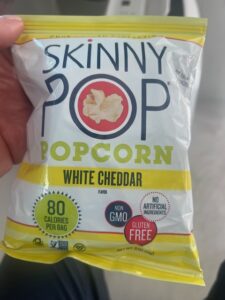Surprising Facts About The Food Pyramid Your Doctor Doesn’t Tell You!
June 10, 2024
 444
444 
It may be surprising to hear that the first food pyramid was set up in Sweden in the 1970s. The Swedish government set up a special committee to evaluate how they could create nutritionally balanced meals at a reasonable cost.
The USDA adapted and adopted the Food Pyramid guide in 1992 whereby the pyramid had four levels: the base that recommended 6-11 servings of bread, cereal, rice, and pasta; the second level that recommended 3-5 servings of vegetables and 2-4 servings of fruit; the third level included 2-3 servings each of dairy and protein sources and finally the top level included using fats, oils, and sweets sparingly.
Due to the USDA food pyramid being influenced by economic and political factors, many health professionals did not take it seriously and it went through many revisions over the years. For example, during Richard Nixon’s presidency, there were policies implemented to boost grain production that eventually led to a surplus.
This surplus influenced recommendations for higher grain consumption… which some critics argued was more about economics than it was about public health.
It was further revised in 2005 in what they called MyPyramid and then again in 2011 and called MyPlate. The problem was that the USDA who shaped its evolution and adaptations revised it multiple times based, in part ,on pressure from food growers, manufacturers and distributors ( the Food Industry)
Like so many decisions made by government agencies, big business and lobbying efforts helped shape the food pyramid. As a result, decisions made about our health were highly influenced by big food and big business whose main goal was higher profits.
Incorporating diet and fitness within historical contexts reveals the decades-long evolution of nutrition and health guidelines.
According to a NCBI Report, the average total required nutrition hours in U.S. medical schools is 21 hours. In fact, more than half of the schools provide less than 20 hours of nutrition education.
A 2013 survey by the American Heart Association found that 71% of medical schools had provided less than the recommended 25 hours of nutrition training and education. Plus the average was an abismal 19 hours.
Stanford Medicine noted that during a four year stint at medical school, students spent fewer than 20 hours learning about healthy foods to eat. Ask yourself how many times your doctor has advised you on your diet. probably not much right? Now you understand why Doctors would rather prescribe drugs for your symptoms rather than giving sound nutritional advice- in other words, they are practicing sickcare, not healthcare.
Simple Diet Plan: Among these factors, a simple diet plan is sometimes overlooked. Consumers are inundated with conflicting nutritional recommendations influenced by industry interests rather than solely health-related principles.
” “Killing You Softly – How Sugar Is Killing Us” delves deep into the dangers of sugar and processed foods, supported by staggering facts. For those having health issues such as high blood pressure, diabetes, coronary issues, dementia, depression, Alzheimer’s, chronic kidney disease, obesity, low energy or a multitude of similar issues, then Killing You Softly is a must read.”
2. Speak with a qualified nutritionist- we recommend Sarah Brandow who has her Masters of Science in Nutrition
– you can find her on Instagram at https://www.instagram.com/sarahbrandow/reels/?ref=lbbpost&hl=am-et
https://www.nutritiondiagnostics.com.au/blogs/news/the-food-pyramid-is-killing-you
https://www.scientificamerican.com/article/rebuilding-the-food-pyramid/
https://www.tastingtable.com/1023664/how-the-food-pyramid-has-changed-over-time/
https://wearechief.com/blogs/articles/the-corrupt-history-of-the-food-pyramid
Questions Remain about Big Food’s Influence on the New Dietary Guidelines
https://www.nytimes.com/2023/10/04/well/eat/dietary-guidelines-food-industry.html
https://www.nestacertified.com/how-lobbying-affects-dietary-guidelines/
https://pubmed.ncbi.nlm.nih.gov/8375951/
https://time.com/4130043/lobbying-politics-dietary-guidelines/
https://www.endtoendhealth.com/how-lobbyists-changed-the-food-pyramid/
https://www.bmj.com/content/361/bmj.k2392
https://www.ecowatch.com/sugar-industry-2004899240.html
https://www.nytimes.com/2016/09/13/well/eat/how-the-sugar-industry-shifted-blame-to-fat.html
https://www.dietaryguidelines.gov/about-dietary-guidelines/history-dietary-guidelines
https://www.ncbi.nlm.nih.gov/pmc/articles/PMC3573730/
https://www.sciencedaily.com/releases/2020/08/200811120112.htm
https://www.ncbi.nlm.nih.gov/pmc/articles/PMC9777732/
https://education.nationalgeographic.org/resource/development-agriculture/
https://www.healthline.com/nutrition/is-gluten-bad


A high sugar diet can deplete your body of several important nutrients. Based on the research, here are the key nutrients that are often depleted by excessive sugar consumption: B Vitamins: Particularly vitamin B1 (thiamine), as well as B3, B5, and B6. These vitamins are essential for glucose metabolism Vitamin C: High glucose intake can […]


Sugar consumption has been linked to various chronic diseases, including cancer, inflammatory diseases, and other health conditions. Here’s an overview of the connections: Cancer While sugar does not directly cause cancer, excessive sugar intake may increase cancer risk through several mechanisms: Obesity: High sugar consumption can lead to weight gain and obesity, which is a […]


When you look at the packaging of Skinny Pop, you will see 80 calories per bag, Non-GMO, No Artificial Ingredients, Gluten Free On the surface, you would think that it is a very healthy alternative…so let’s break down the ingredients: Popcorn Popcorn is a whole grain derived from corn kernels. It’s a healthy ingredient that […]